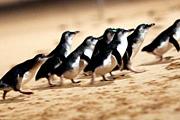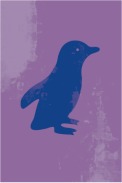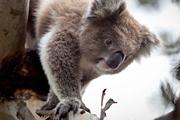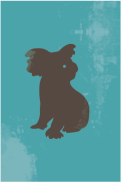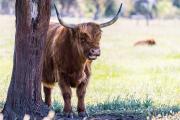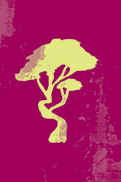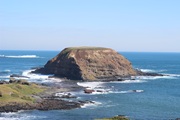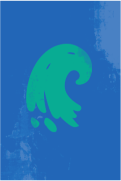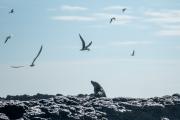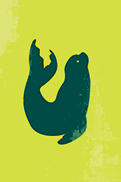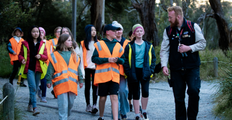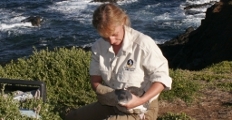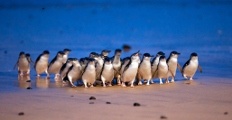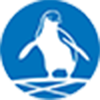Know Your Nature Parks - Summer 2023
The summer is in full swing with a flurry of activity for our wildlife on Phillip Island (Millowl). From abundant blooms to nesting birds, discover what’s on at the Nature Parks over summer.
In The Skies—Birdlife
Hooded plover
The first hooded plover nests were monitored throughout spring, with more nests expected over the warmer summer months. Tides and disturbance pose challenges to egg hatching and chick survival. To help understand the patterns and behaviours of hooded plovers and other shorebirds like red-capped plovers or pied oystercatchers, our Conservation team continues to monitor pairs, with one chick recently fledging!
It is recommended to keep at least 100m clear of signed and roped nest refuge areas on beaches, so the parents of eggs and chicks are not scared away by curious humans or canines. As always, please walk your dogs on leashes and find out Where can I walk my dog?
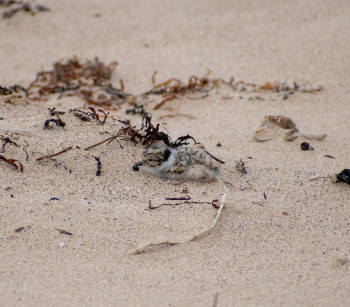
Image 1: Hooded plover chick
Short-tailed shearwaters
Over summer, the short-tailed shearwater parents incubate eggs until their chicks hatch in January. Parents take it in turns to sit on eggs until they hatch, they also share the load of feeding the hungry young chicks. The annual lifecycle of this species is a fascinating one, and this time of year they are busy using the haven of Millowl as their safe nesting spot. You can help this species by remembering to keep to tracks, as their burrows can be well hidden under vegetation on dunes across the Summerland Peninsula.

Image 2: Shearwaters flocking
Other Bird Life
There are a range of bird species that migrate to Millowl to feed or breed. Though it may be tempting to get a closer look, remember that many species of birds are easily frightened by human disturbance. Bring your binoculars and admire them from afar, lest you unintentionally cause parents to abandon chicks!
Some birds to look out for over the summer months include:
- Pied oystercatchers—their bright red beak might help you spot these birds on the shorelines across beaches on Millowl.
- Red-capped plovers—these adorable tiny birds with a splash of red on their head are another species of plover that nests on Millowl.
- Migratory birds including sandpipers, curlews, godwits, plovers, knots and stints.
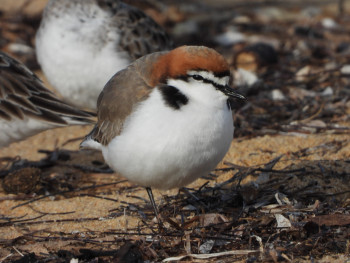
Image 3: Red-capped plover
On The Ground
Eastern barred bandicoot
In spring, the Eastern barred bandicoot populations were closely monitored through our annual trapping program, revealing that these populations continue to thrive. By this time of year, Eastern barred bandicoots are coming to the end of their breeding season, so keep your eyes out for young joeys! If you want to be a friend to this species Endangered species:
- Take your time when driving on the roads at dusk, dawn and night.
- Report sightings of bandicoots around Millowl using the QR code and our website.
- Pool owners, consider adding an escape in case a bandicoot becomes trapped in the water!
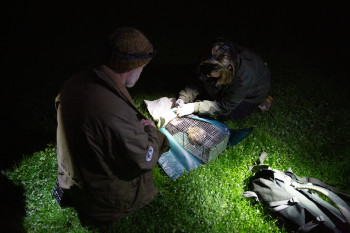
Image 4: Eastern barred bandicoot trapping
Bush stone-curlews
The amazing bush stone-curlews we have on the island will be released during 2024, an exciting moment for Millowl to have a key species re-enter the ecosystem.
Until then, we are on the lookout for some new Curlew Custodians! Our dedicated ‘Curlew Custodians’ Volunteer team helps to deliver food and monitor our captive bush stone-curlews at the Koala Conservation Reserve.
As we work towards reintroducing the species, Curlew Custodians contribute to our conservation efforts by raising awareness with the community and visitors.
Passionate about nature and want to get involved? Find out more and apply here.

Image 5: Bush stone-curlew in aviary at Koala Conservation Reserve
Yarning Circle
After much anticipation, at the start of December the Yarning Circle was officially opened at the Koala Conservation Reserve. Throughout 2023, three young Aboriginal and Torres Strait Islander artists designed and created artworks guided by local artists to bring this celebration of Bunrong culture to life.
A safe space for all cultures, the Yarning Circle aims to teach people about the plants and animals of the woodland environment. Stop by to admire the mosaic and mural artwork this week, you’ll find it just outside the Koala Conservation Reserve Visitor Centre.
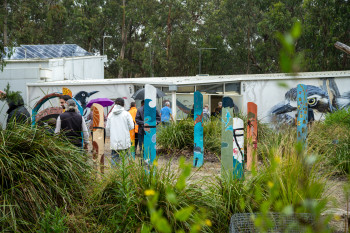
Image 6: Photo from opening ceremony
Tracks and Trails
Boasting pristine snorkelling spots and a small surf break at high tide for surfers of all abilities, Kitty Miller Bay is a wonderful place to visit during summer. On low tide, enjoy the stunning coastal views as you walk across the rocks and around the corner to find the site of the SS Speke Shipwreck. A swim at one of the many beautiful beaches on Millowl is one of the best ways to cool off and enjoy summer (our penguins and seals agree!), for more information click here.
Phillip Island is a wonderful place to explore. For your safety, please pay attention to signage and regulations. Stay away from cliff edges and the base of coastal cliffs (do not sit or stand within 10 metres).
Choose a patrolled beach and always swim between the flags. Important information about how to stay safe is available for you at SLSA Beachsafe and water safety.
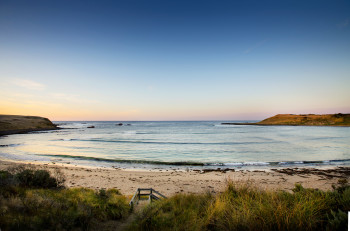
Image 7: Kitty Miller Bay
Flora
The natural world is full of activity during summer, and there is no exception when it comes to the flora species of Millowl. With a variety of ecosystems, Phillip Island gives a wonderful window into the differences between wetland, coastal and woodland environments.
Take a walk through the Koala Conservation Reserve or nearby Oswin Roberts Reserve and you’ll see the floating seed heads of grasses such as kangaroo and wallaby grass. Overhead, sweet Bursaria is flowering, attracting insects to its nectar. The purple flowers of kangaroo apples and their striking bright fruit stand out on shrubs throughout the woodland environment.
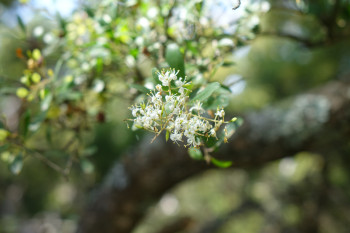
Image 8: Sweet Bursaria
Meanwhile, if you head towards the dunes, you’ll be greeted by a range of pink blooms including rounded noon flowers that create pink carpets across the Summerland Peninsula, or the grass trigger plant which you’ll discover at spots like Surf Beach. The grass trigger plant has a fascinating method to disperse seeds, aptly named the trigger plant after the interesting mechanism that deploys after an insect pays the flower stem a visit!
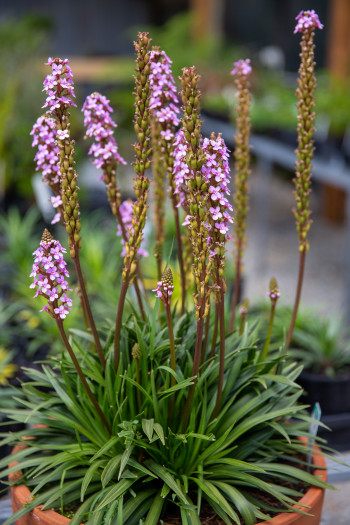
Image 9: Grass trigger plant
Look up, and you might notice the iconic moonah trees with their twisted branches in full bloom. If you can’t spot their abundant cream-coloured flowers, the hum of bees will lead you there.
It’s not just flowers that are abundant in summer; plants are actively growing, while the seeds and fruits that come from spring flowers are being enjoyed by birds and other wildlife. The seeds from tea trees are aplenty, while the last of the white berries on coast beard-heath are being eaten and then spread by birds.
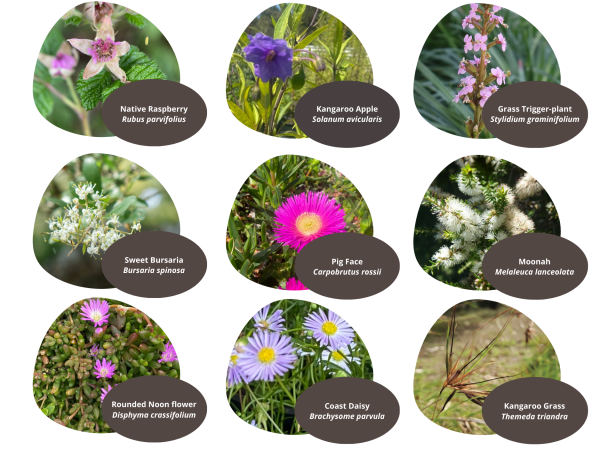
Figure 1: Summer plant list
In The Trees
Koalas (Gurrborra)
The koala joeys at the Koala Conservation Reserve have left their mothers’ backs and are spending more and more time on their own. In the warmer months the smell of the eucalypts in the woodland ecosystem are fragrant, and the shade from the canopy is wonderfully cool. Take a wander through the treetop boardwalk and see if you can spot a koala having a sleep (did you know they sleep up to 20 hours a day.) You might even be lucky enough to spot one of our growing joeys up close.

Image 10: Koala joey at Koala Conservation Reserve
On Our Shores and In Our Waters
Penguins (Guyup)
The little penguins have been embracing the silly season too! These amazing, seabirds are very busy over summer, with the breeding season in full swing and parents of chicks working hard to keep their young well-fed. Once the chicks have reached a good weight, it is time for them to lose their down (their fluffy feathers), to make way for interlocking waterproof feathers. Then, it’s time to fend for themselves, and embark on their journey at sea as a little penguin! In late summer, it will be time for the annual moult, an important phase in the little penguin lifecycle, ensuring they have a new set of waterproof feathers for the year ahead.
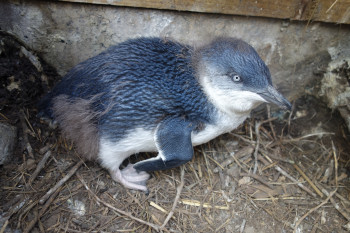
Image 11: Little penguin chick with down
Seal Rocks News
The Australian fur seal breeding season has commenced, with the mums of pups working hard to keep them well-fed... occasionally parenting two pups at once! The Conservation team doesn’t disturb the seals at this time of year, to minimise disruption at an already challenging time for the species. If you’re out on jet skis and boats this summer, enjoy the water, but remember to share the sea. Follow regulations regarding the proximity to these amazing animals. Although it might be tempting to sneak in for a closer look, keep in mind that the noise from motors can be disruptive for marine creatures.

Image 12: Seal pup
Sharing our Shores
Our annual campaign to encourage the local community and visitors to share our shores is underway! Beaches are a place where wildlife nests and rests, and we need everyone onboard to help our precious and vulnerable wildlife raise their young safely.
The posters and signs for this year feature artwork from last year’s poster competition, and entries are now open for local children to enter this year’s competition.
Be sure to look out for beach signage and check regulations on where to walk your dog this summer. Find out more here.
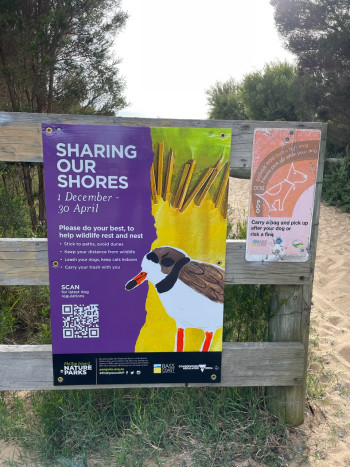
Image 13: SOS signage
Water for Wildlife
Leaving a small dish of water for thirsty animals, installing a bird bath or creating your very own backyard pond are all wonderful ways you can support wildlife over summer. Ensure the water bowls are not too deep to protect small critters like bandicoots and remember to top them up on hot days—our furry and feathered friends will thank you by visiting your backyard to cool off.

Image 14: Bird bath at Koala Conservation Reserve
Spot injured wildlife?
With busy roads over the summer period, we remind all visitors and the local community alike to slow down and share the roads. Be mindful at dusk, dawn and night when wildlife is more active. If you spot injured or deceased wildlife, please report this directly to Wildlife Victoria by calling (03) 8400 7300.
Keeping wildlife wild—the greatest thing you can do for wildlife is to keep it wild. Please always keep your distance and remember how lucky we are to be able to share our beautiful island home.
Share Your Nature Parks
Don't forget to share your Nature Parks images with us by using our hashtag #PhillipIslandNP





